Authenticating to Control Center with Kerberos
This tutorial walks you through setting up Control Center to use Kerberos authentication with Keycloak.

The tutorial uses the following software versions:
-
Control Center 2023.3
-
Keycloak 19.0.2
-
Kerberos 5 1.19.2
1. Configure Control Center to use OAuth2 Keycloak Authentication
-
Open the Keycloak Administration console in your browser and log in as administrator.
-
Create the
gridgainrealm:-
Initiate realm creation.
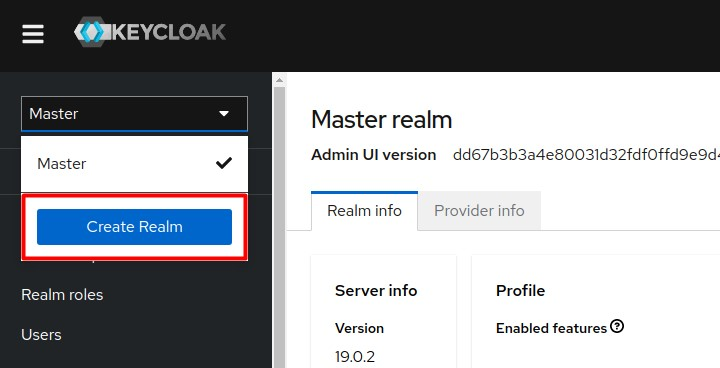
-
Enter the name "gridgain" ans save the new realm.

-
-
Create the
control-centerclient:-
Initiate client creation.

-
Enter the values as they appear in the screenshot below and click Next.

-
Enter the values as they appear in the screenshot below and click Save.

-
-
On the Client Details page, define access settings for the client you have created. Use your actual Control Center host address and port number.
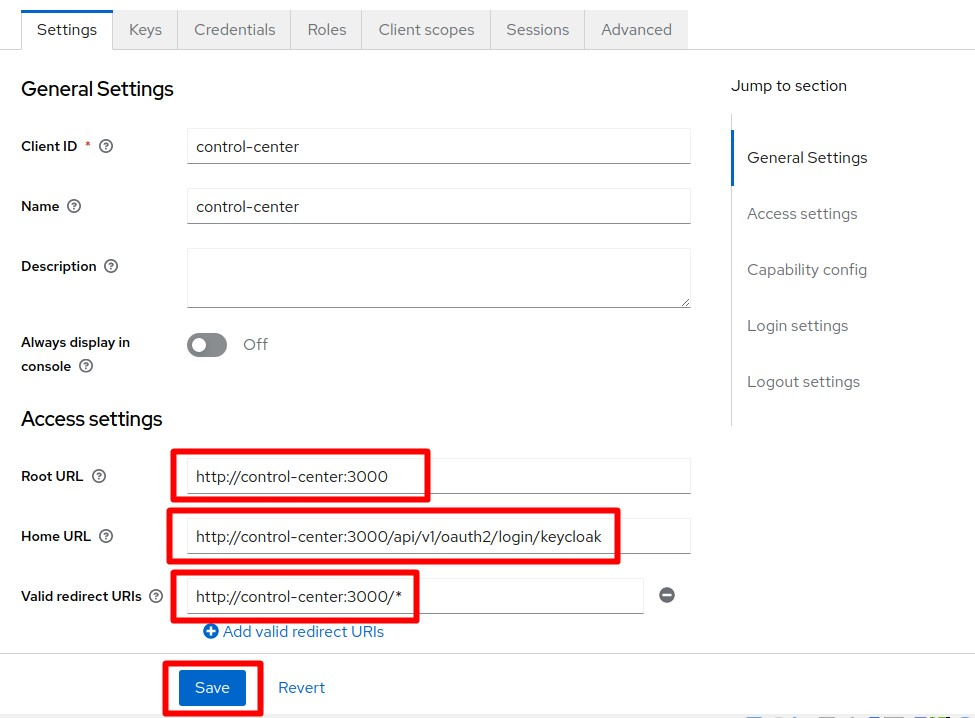
-
Root URL: http://[cc-host]:[cc-port]
-
Home URL: http://[cc-host]:[cc-port]/api/v1/oauth2/login/keycloak
-
Valid Redirect URIs: http://[cc-host]:[cc-port]/*
-
-
On the Credentials tab, copy Client secret, which is required to set up Control Center connection to Keycloak.
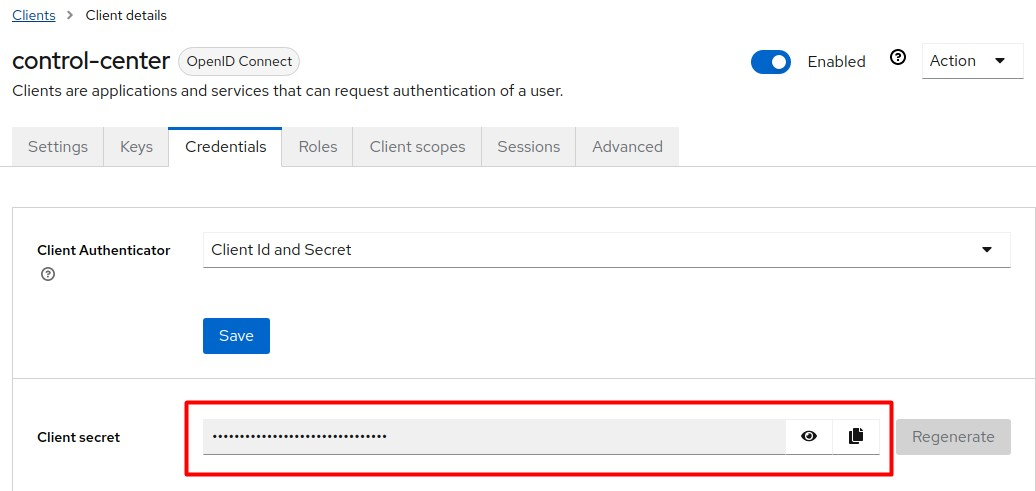
-
Click the OpenID endpoint configuration link on the Realm Settings page.

-
On the page that opens, define the following settings.

-
Create a new Control Center user:
-
Initiate user creation.
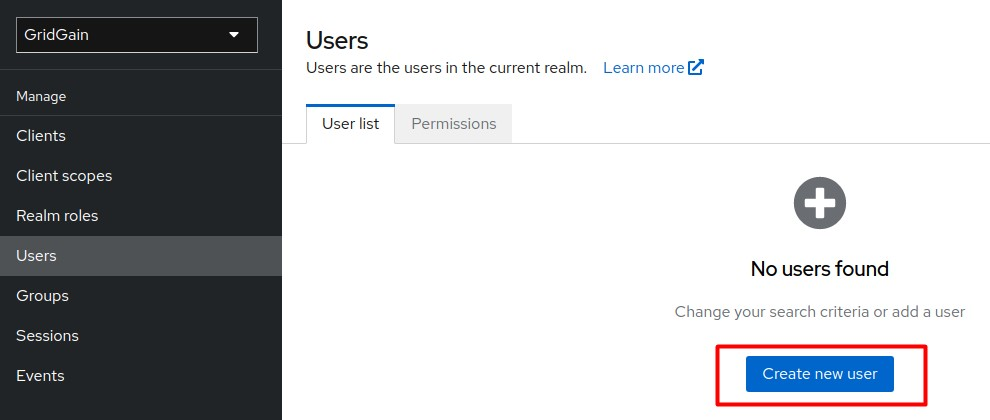
-
Enter the values as they appear in the screenshot below and click Create.
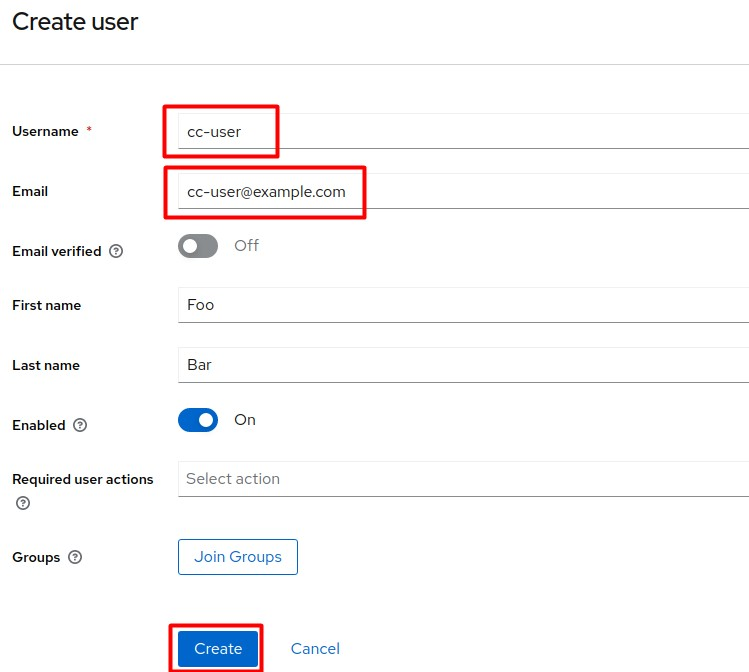
-
-
Manually set up a password for
cc-user:-
Initiate the Set password procedure.
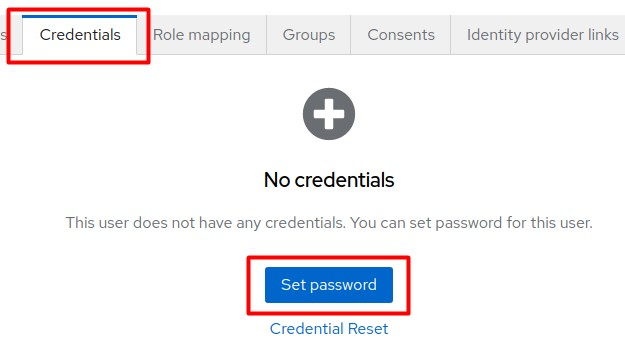
-
Enter the required password and click Save.
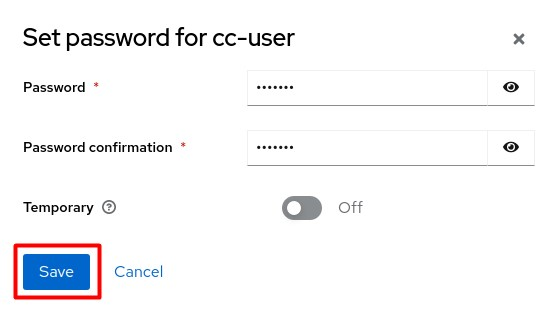
You can now authenticate to Control Center as
cc-userwith the password you created in the previous step.
-
-
Edit the Control Center’s
application.yamlconfiguration. Use the values from p.5 and p.7 above. Replace[kc-url]with the actual Keycloak network address.spring.security.oauth2.client: registration: keycloak: client-id: control-center client-secret: <secret> scope: openid, profile, roles provider: keycloak: authorization-uri: http://[kc-url]/realms/gridgain/protocol/openid-connect/auth token-uri: http://[kc-url]/realms/gridgain/protocol/openid-connect/token jwk-set-uri: http://[kc-url]/realms/gridgain/protocol/openid-connect/certs
2. Set up Kerberos Server on Ubuntu
-
Install Key Distribution Center and Kerberos Admin Service:
$ sudo apt install krb5-admin-server krb5-kdcDuring installation, set the following properties:
-
Default realm:
EXAMPLE.COM -
Kerberos server:
kdc.example.com -
Admin server:
kdc.example.com
-
-
Create a realm:
$ sudo krb5_newrealm
3. Create Kerberos principals
-
Create a new principal to be used by Keycloack:
$ sudo kadmin.local -q 'addprinc -randkey HTTP/kdc.example.com@EXAMPLE.COM' -
Generate the principal keytab file:
$ sudo kadmin.local -q 'ktadd -k /tmp/http.keytab HTTP/kdc.example.com@EXAMPLE.COM' -
Place the
http.keytabfile on the Keycloack machine locally. -
Create a principal and keytab to be used by Control Center:
$ sudo kadmin.local -q 'addprinc -randkey krb-user@EXAMPLE.COM' $ sudo kadmin.local -q 'ktadd -k /tmp/krb-user.keytab krb-user@EXAMPLE.COM'
4. Configure Keycloack to Log in with a Kerberos Ticket
-
Select the
gridgainrealm and go to User Federation.
-
Add the Kerberos provider and click Save.

-
From the side menu, select Authentication.

-
Add Kerberos as an alternative step to the Browser flow.

5. Sign in to Control Center with the Kerberos User
-
Install the Kerberos client on the client side (if not already installed):
$ sudo apt install krb5-userDuring installation, configure the realm host.
-
Authenticate to Kerberos as
krb-userwith the keytab you have created in p. 3.3:$ kinit -kt /tmp/krb-user.keytab krb-user@EXAMPLE.COM -
Check if the Kerberos tickets have been successfully granted by KDC:
$ klistThe response should be:
Ticket cache: FILE:/tmp/krb5cc_1000 Default principal: krb-user@EXAMPLE.COM Valid starting Expires Service principal 10/16/2022 12:19:10 10/16/2022 22:19:10 krbtgt/EXAMPLE.COM@EXAMPLE.COM renew until 10/17/2022 12:19:09 -
Launch your browser (Chrome in this tutorial) with SPNEGO enabled to allow Kerberos authentication with Keycloack:
$ /usr/bin/google-chrome-stable --auth-server-whitelist="*.example.com" --auth-negotiate-delegate-whitelist="*.example.com" -
Open Control Center in the browser and select the Sign in to your account with OpenID option.

Authentication with the Kerberos principal is performed automatically
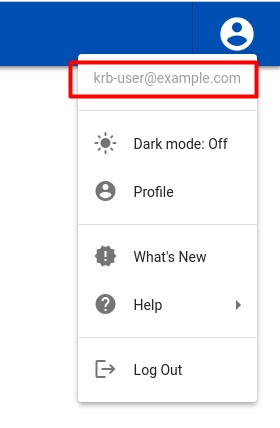
© 2025 GridGain Systems, Inc. All Rights Reserved. Privacy Policy | Legal Notices. GridGain® is a registered trademark of GridGain Systems, Inc.
Apache, Apache Ignite, the Apache feather and the Apache Ignite logo are either registered trademarks or trademarks of The Apache Software Foundation.

